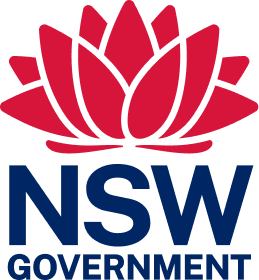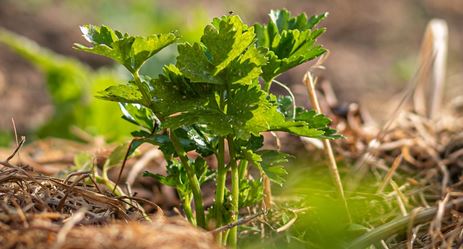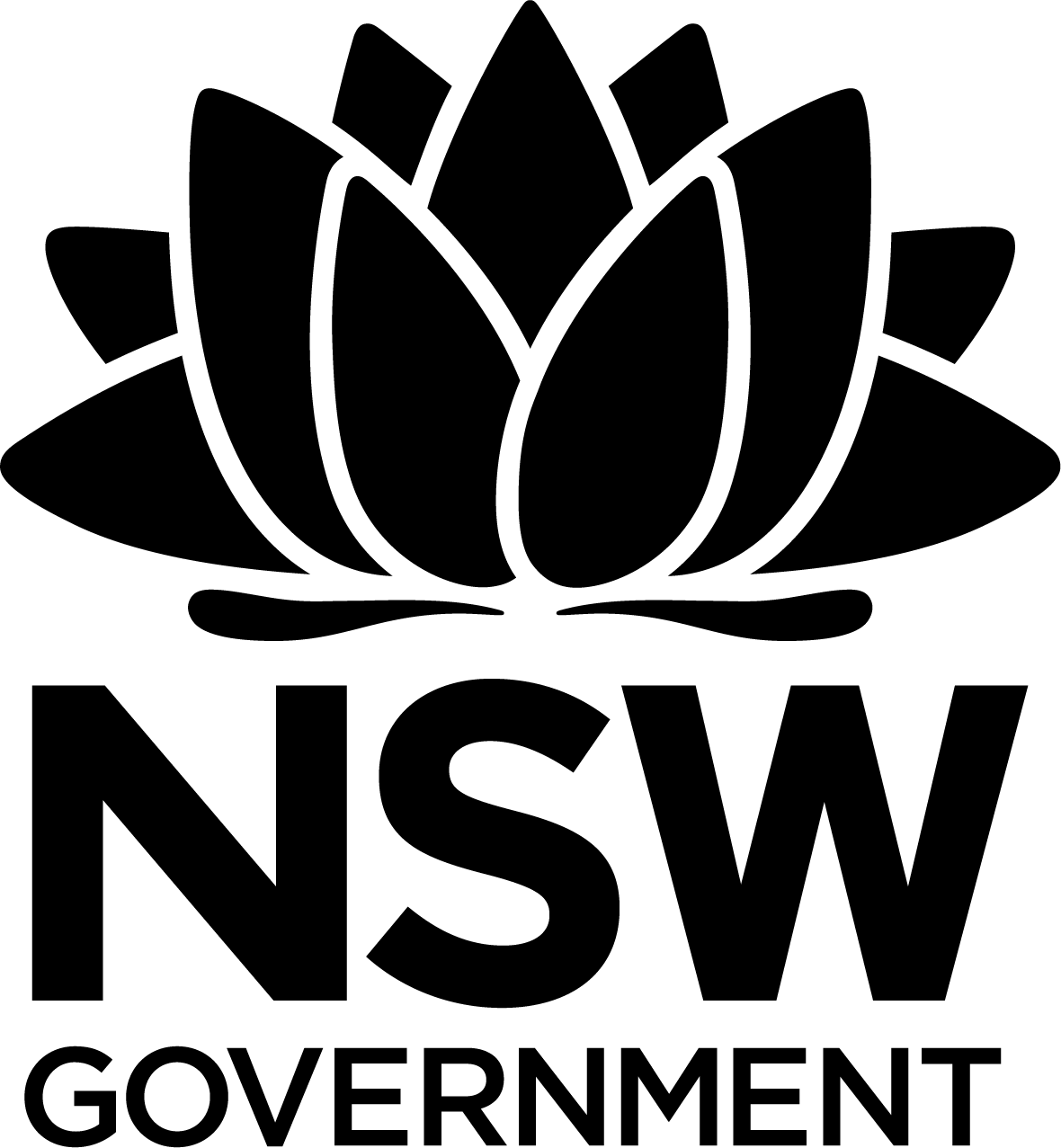
Crown land manager resource
Who manages Crown land
The government and the community work in partnership to manage Crown reserves. Across NSW, more than 7,800 Crown reserves are being managed by a network of community-minded organisations such as local councils, incorporated associations, not-for-profit corporations and approximately 600 individual volunteer boards, known as statutory land managers. The Minister, the Department of Planning, Housing and Infrastructure (the department) and other state government bodies also have a role in Crown lands management.
Without dedicated volunteers and community-focused organisations, the NSW Government could not provide the number and diversity of publicly available opportunities on Crown land.
Crown land ownership and management structure
This diagram illustrates the management structure for Crown reserves, as well as the interrelationship between stakeholders and their roles.
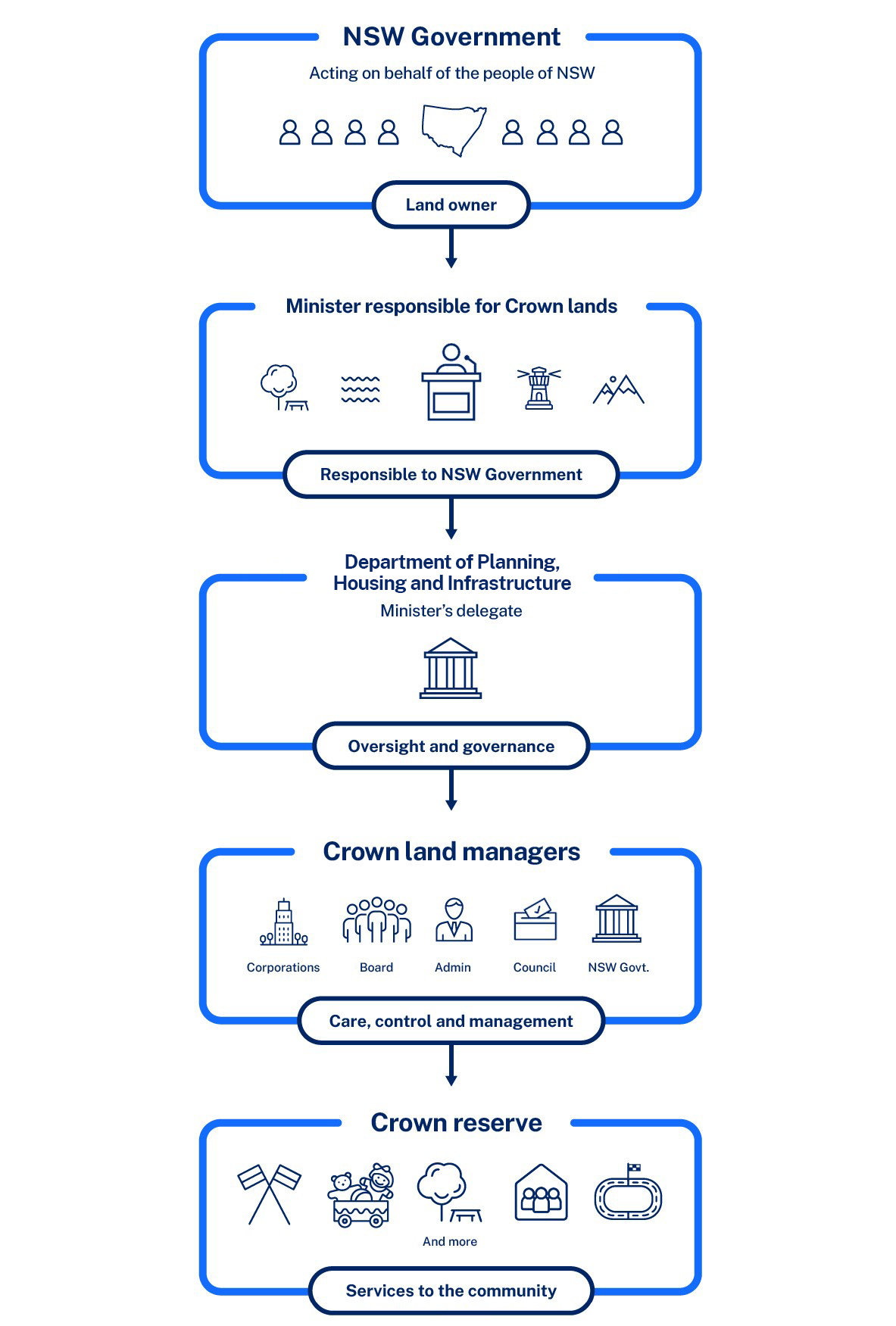
Crown land managers
A Crown land manager (CLM) is the name given to a body responsible for the care, control and management of Crown reserves on behalf of the people of NSW. Because a range of organisations can be appointed as a CLM, communities can have a direct role in managing land to provide services that best meet local community needs.
A CLM could be:
- a local council
- a Local Aboriginal Land Council
- an incorporated association
- a corporation
- a statutory land manager.
The diversity of our managers reflects the vast range of services provided on Crown reserves. Having flexible management options means there are tailored arrangements to best suit the unique circumstances and stakeholder needs, maximising economic, social and environmental value.
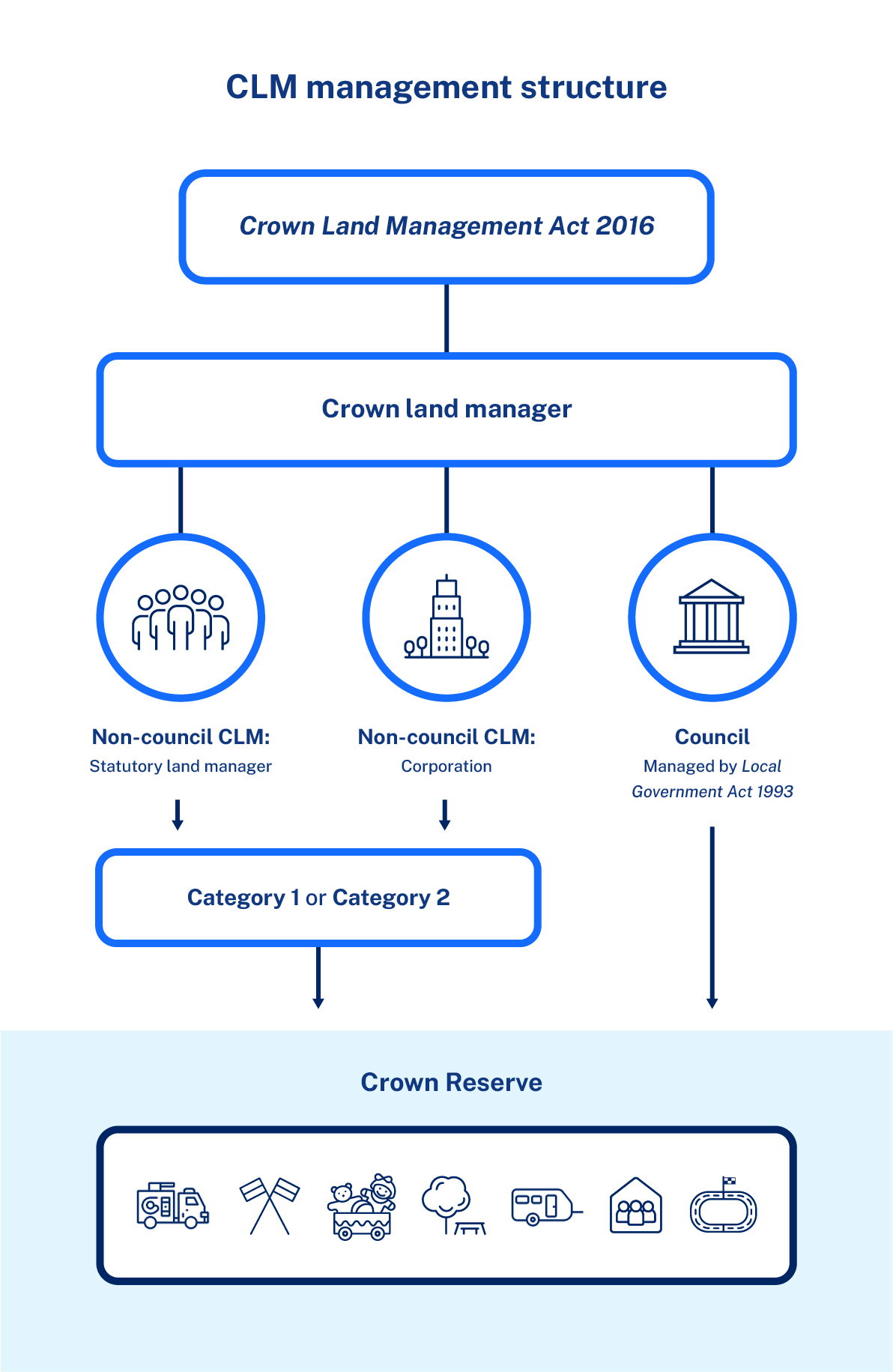
Crown land manager categories
Council CLM
Every local council in NSW participates in the management of Crown reserves as an appointed CLM. Together, councils manage more than 6,000 Crown reserves. In many cases, councils also rely on volunteer groups and individuals to provide management support.
Crown lands are generally managed by councils in accordance with the Local Government Act 1993 as ‘community land’, including the issuing of leases, licence and other estates.
The purpose of the reserve (through categorisation) informs the management plans for community land. In exceptional circumstances, it may be managed as operational land, subject to ministerial consent. Native title obligations are the responsibility of council.
More information and resources for Council CLMs is available here
Category 1 non-council CLM
A Category 1 non-council CLM (Category 1 CLM) is designated as a land manager who has demonstrated advanced governance and expertise in Crown land management. Category 1 CLMs are responsible for Native title obligations. Category 1 CLMs include:
NSW Crown Holiday Parks Land Manager
Caravan and holiday parks are significant assets operating in a dynamic tourism industry and complex regulatory environment.
The NSW Crown Holiday Parks Land Manager is the appointed CLM of some of the state's most iconic coastal and inland caravan parks and reserves. This includes 37 holiday parks on the north and south coasts and eight inland parks that provide significant tourism, environmental, community and economic benefits.
The NSW Crown Holiday Parks Land Manager trades under the name Reflections Holiday Park
Cemeteries and Crematoria
- Metropolitan Memorial Parks Land Manager
- Catholic Metropolitan Cemeteries Trust
For more information about cemeteries and crematoria, visit the Cemeteries & Crematoria NSW website.
Category 2 non-council CLM
A Category 2 non-council CLM (Category 2 CLM) is a CLM that is not a local council and is not assigned as a Category 1 CLM.
Most non-council CLMs are Category 2 - there are more than 375 incorporated associations and corporations and more than 555 statutory land manager boards managing Crown reserves for the benefit of our community.
What is a statutory land manager?
A statutory land manager is a legal entity established by the Crown Land Management Act 2016 so that individuals, as members of a board, and administrators, can manage Crown reserves.
When members of the community want to get involved in Crown lands management, joining the board of an existing statutory land manager is the typical starting point.
A statutory land manager board acts like a company board of directors. It can be made up of community volunteers, local government councillors or other people appointed by the minister.
Members of the community who are appointed to statutory land management boards undertake a valuable role in the management of these community facilities and Crown reserves.
Shared management of Crown land
Some reserves may have more than one CLM. Different management responsibilities may be determined according to geography (areas of the reserve) or function (for example, finance or operations).
The minister may also tenure parts of a reserve managed by a CLM to accommodate complementary but different land uses or land users.
For example, the department directly administers all communication tower sites on Crown land to ensure Independent Pricing and Regulatory Tribunal (IPART) recommendations are delivered consistently. Many tower sites are situated on reserves where a CLM is appointed. In these situations, the CLM continues to have management responsibility for the area not occupied by the tower site, while the tower site owner has the authority to control the tower site directly via the minister through a licence agreement. A Crown land management rule establishes this occupation arrangement and the rules that apply to all CLMs
The role of the department
As a delegate of the minister, the department has a direct role in managing Crown reserves, including:
- appointing and managing Crown land managers
- ensuring CLMs understand their role and obligations and provide support, guidance and advisory services. This includes delegated consent to authorise a range of activities.
- ongoing monitoring and compliance
- managing Crown lands that don’t have an appointed Crown land manager.
- implementing the new State Strategic Plan for Crown Land - Crown Land 2031.
This Crown land manager web resource was printed on 27 Jul 2024. The information contained in this web resource is based on knowledge and understanding at the time of writing Jul 2024. However, because of advances in knowledge, users are reminded of the need to ensure that the information upon which they rely is up to date and to check the currency of the information by referring to the website (www.reservemanager.nsw.gov.au).
© State of New South Wales through Department of Planning, Industry & Environment 2024.
Page link: https://reservemanager.crownland.nsw.gov.au/who-we-are/who-manages-crownland
